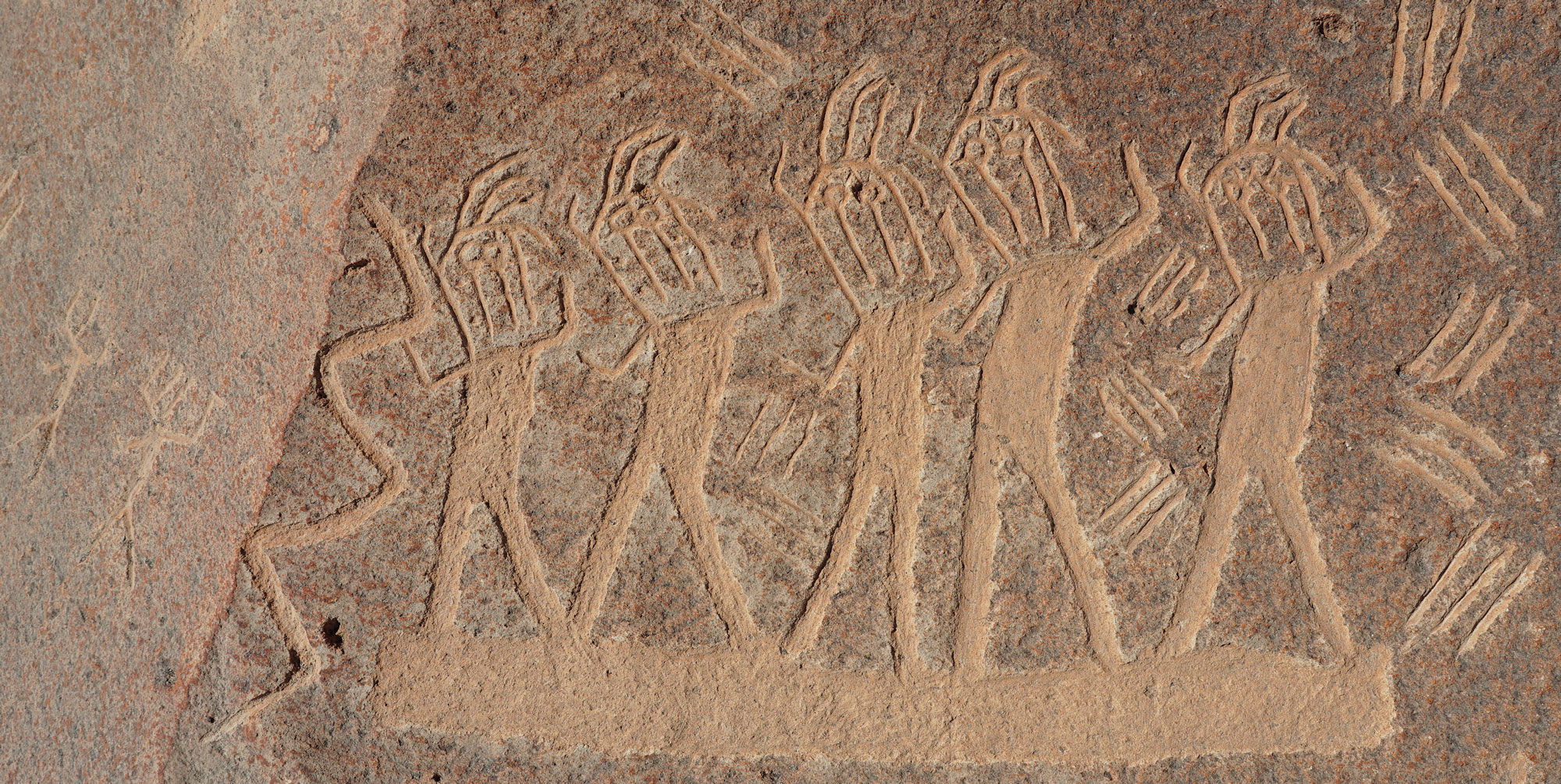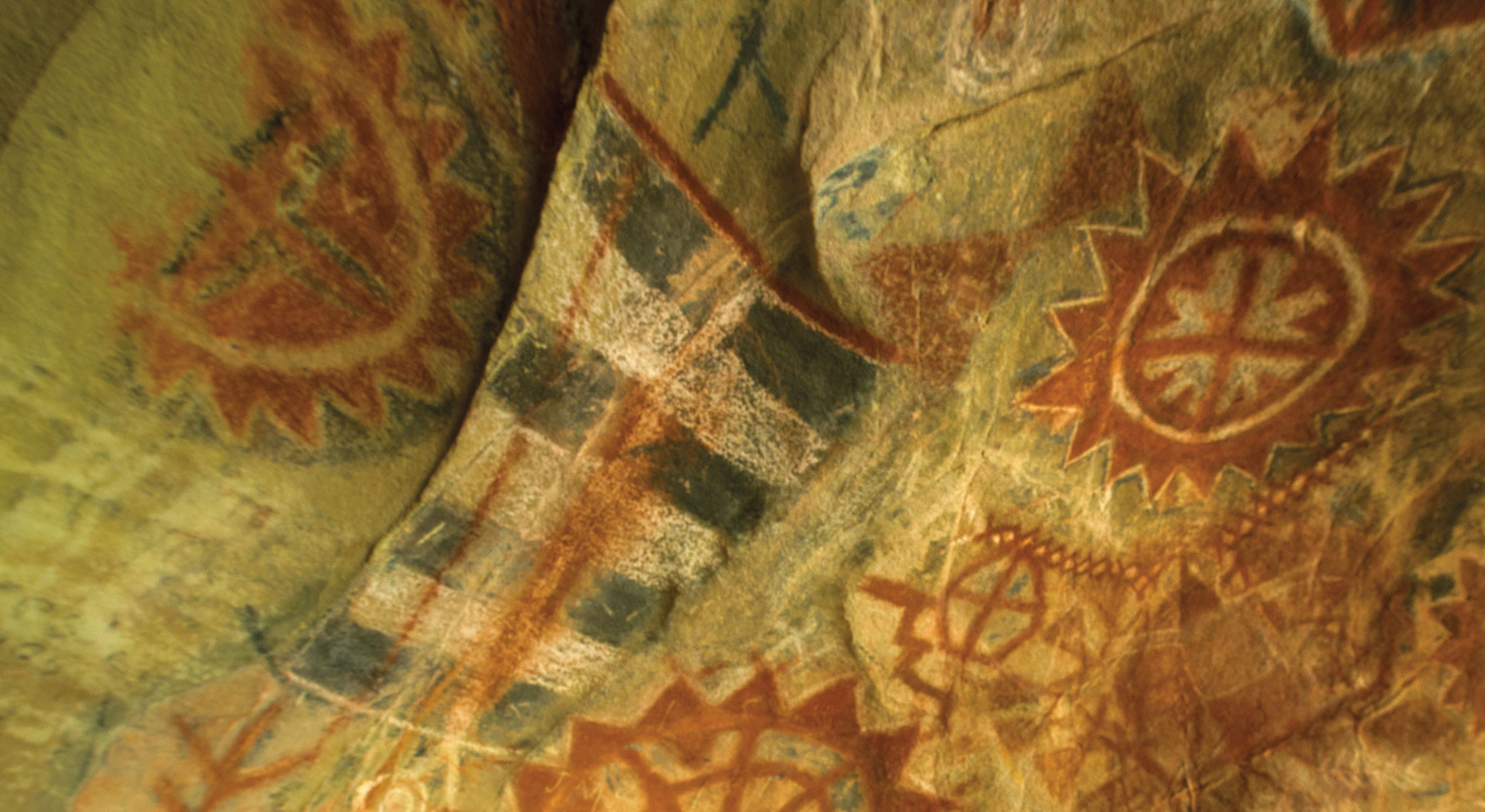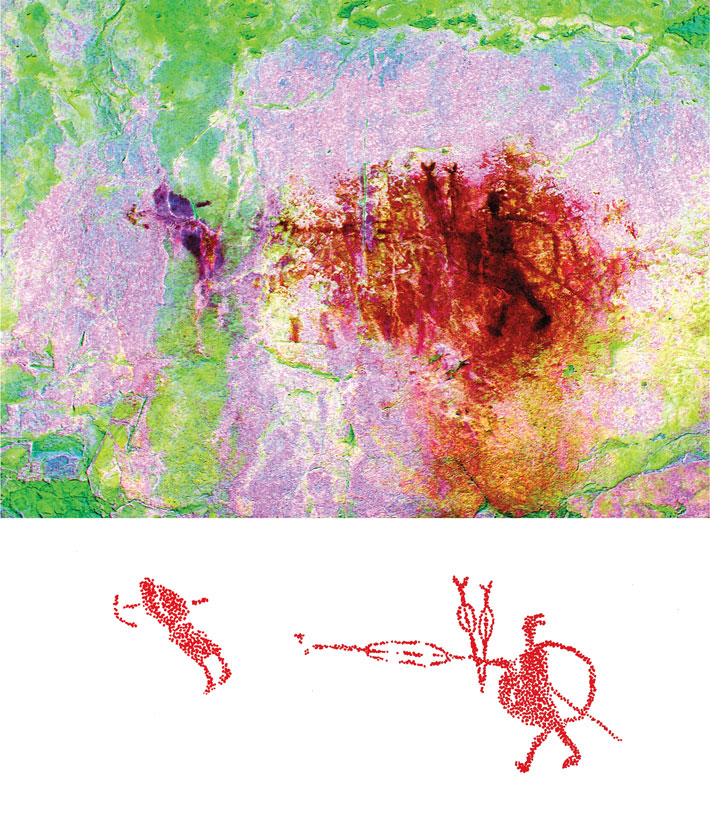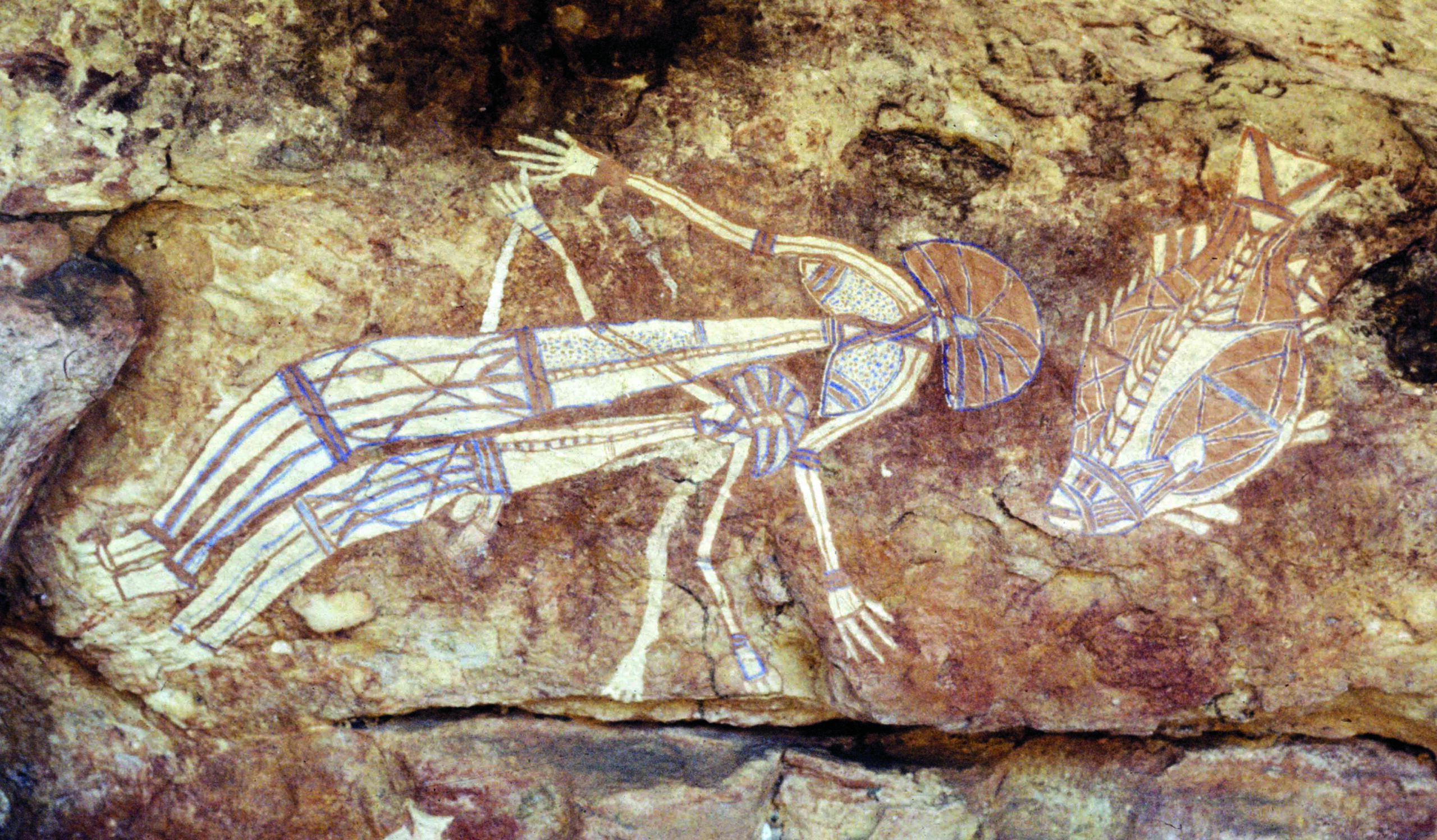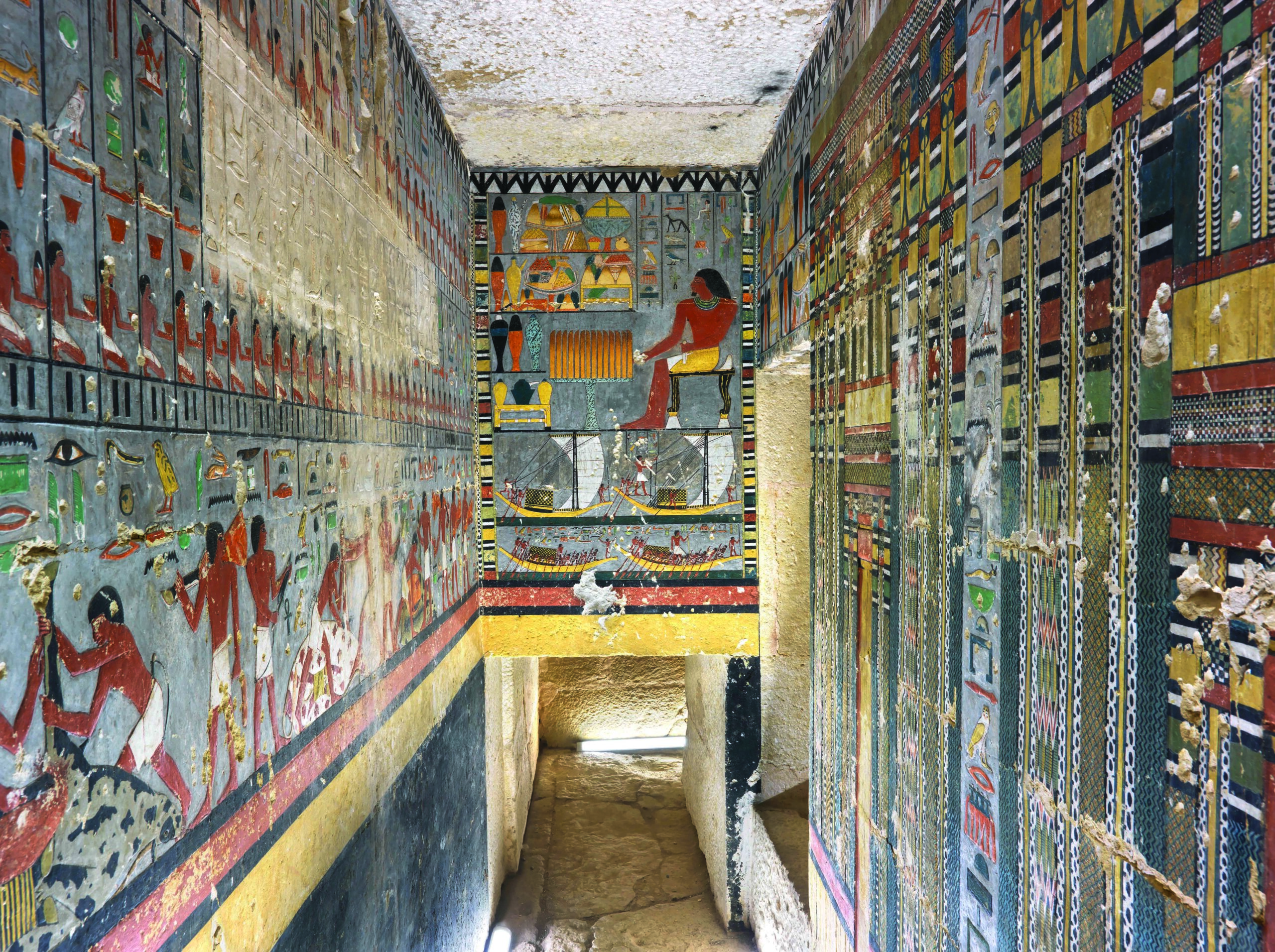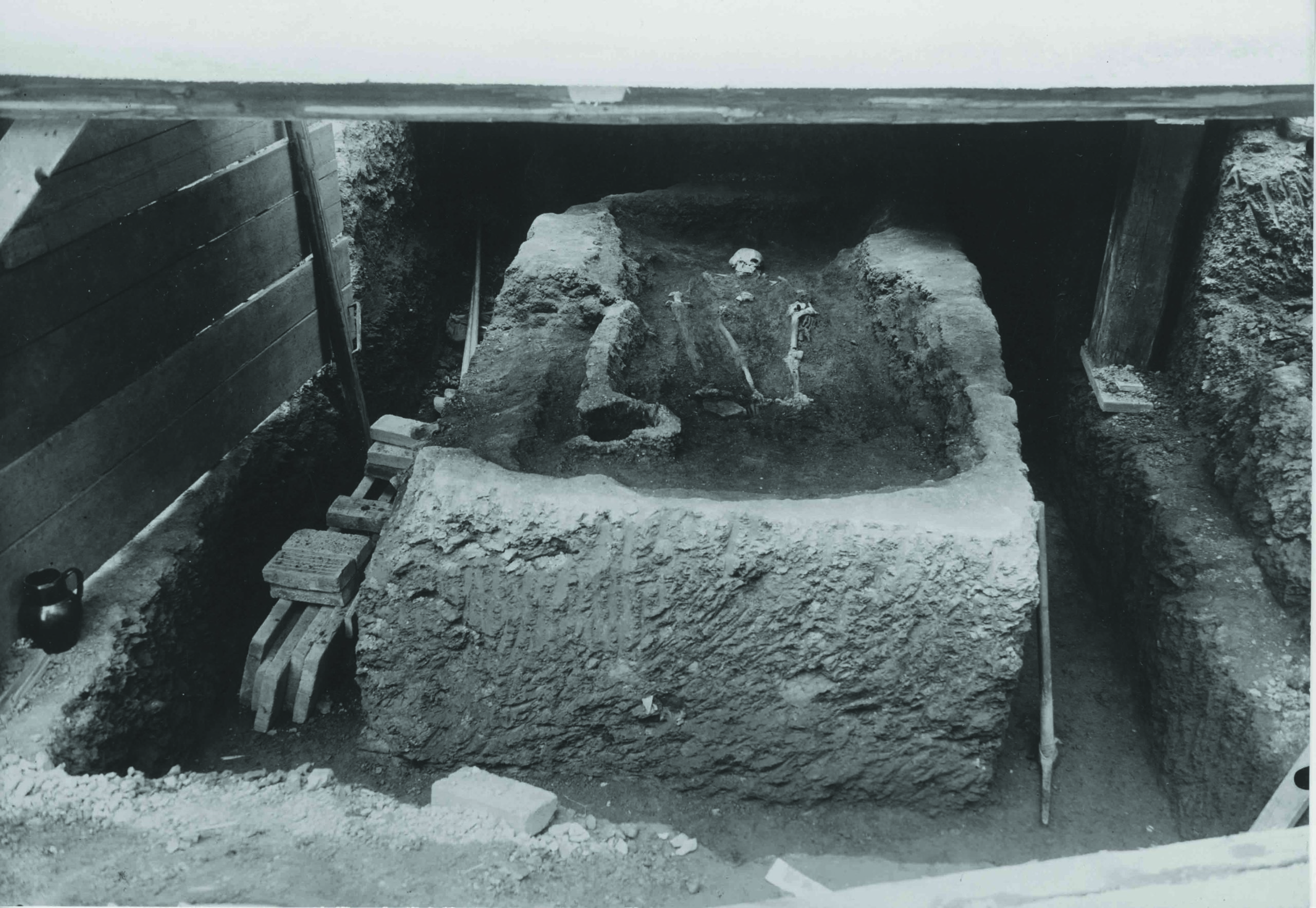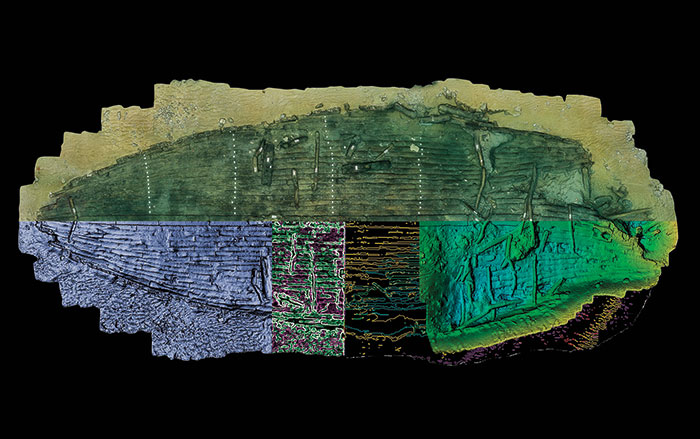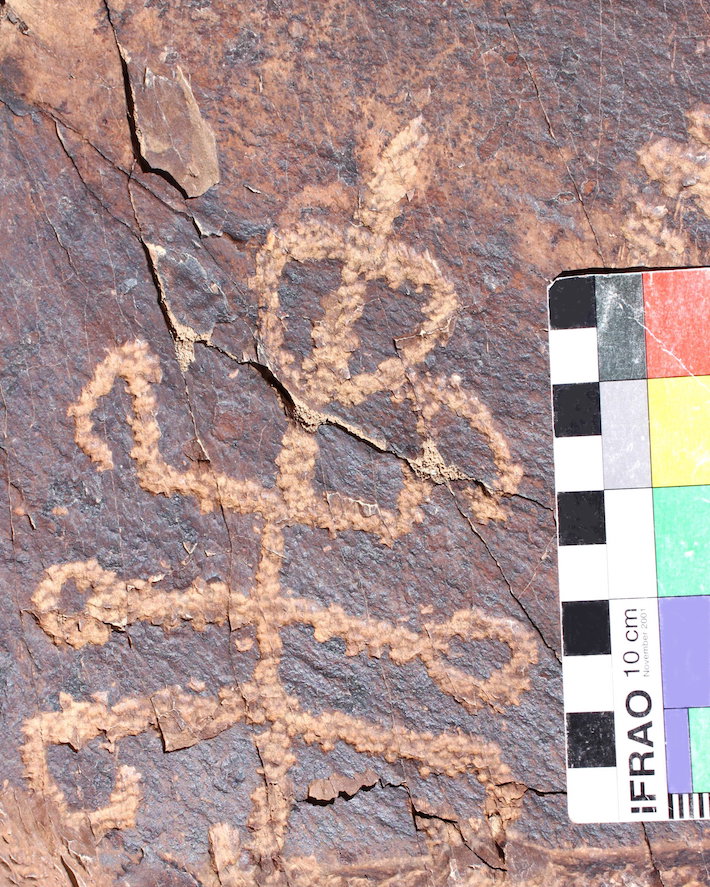
TEHRAN, IRAN—According to a statement released by Pensoft, a five- and one-half-inch petroglyph in central Iran has been described as a possible part man, part praying mantis by entomologists Mahmood Kolnegari of Islamic Azad University of Arak, Mandana Hazrati of Avaye Dornaye Khakestari Institute, Matan Shelomi of National Taiwan University, and archaeologist Mohammad Naserifard. Mantises have bulging eyes, flexible necks, elongated bodies, and enlarged forelegs for gripping prey such as flies, bees, and sometimes small birds. The image depicts a creature with six limbs, including grasping forearms, and middle limbs that end in loops or circles. It also has a triangular head topped with an extension resembling that found on the local species of mantis. The artwork is estimated to be between 4,000 and 40,000 years old. To read about a medieval Islamic empire in Iran, go to "Minaret in the Mountains."


